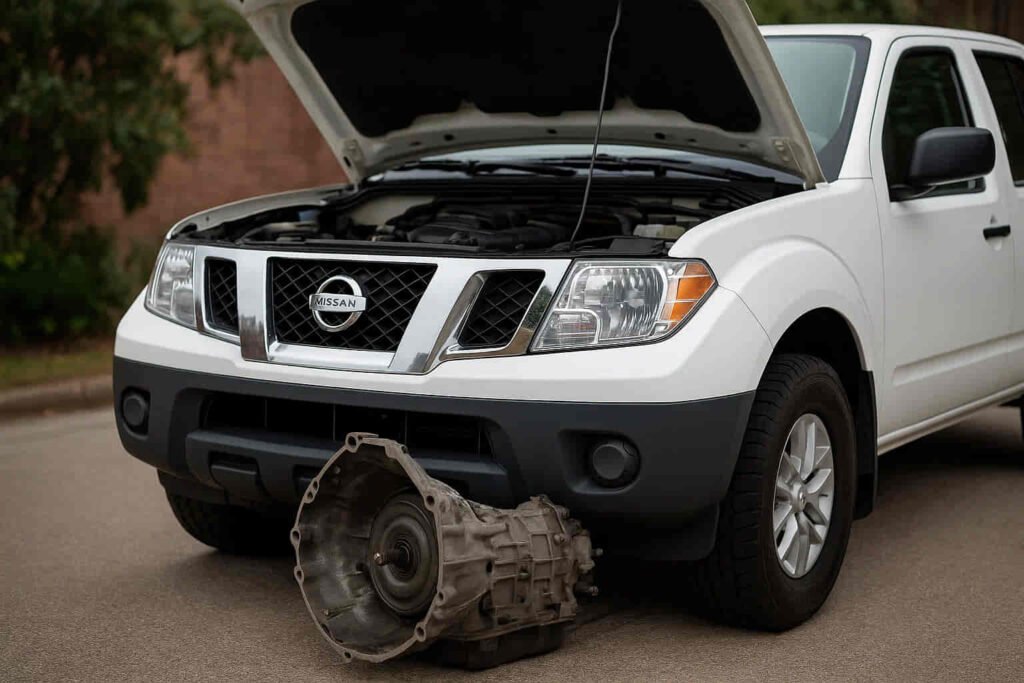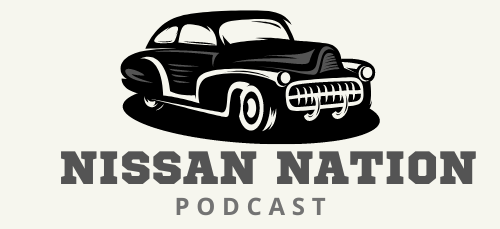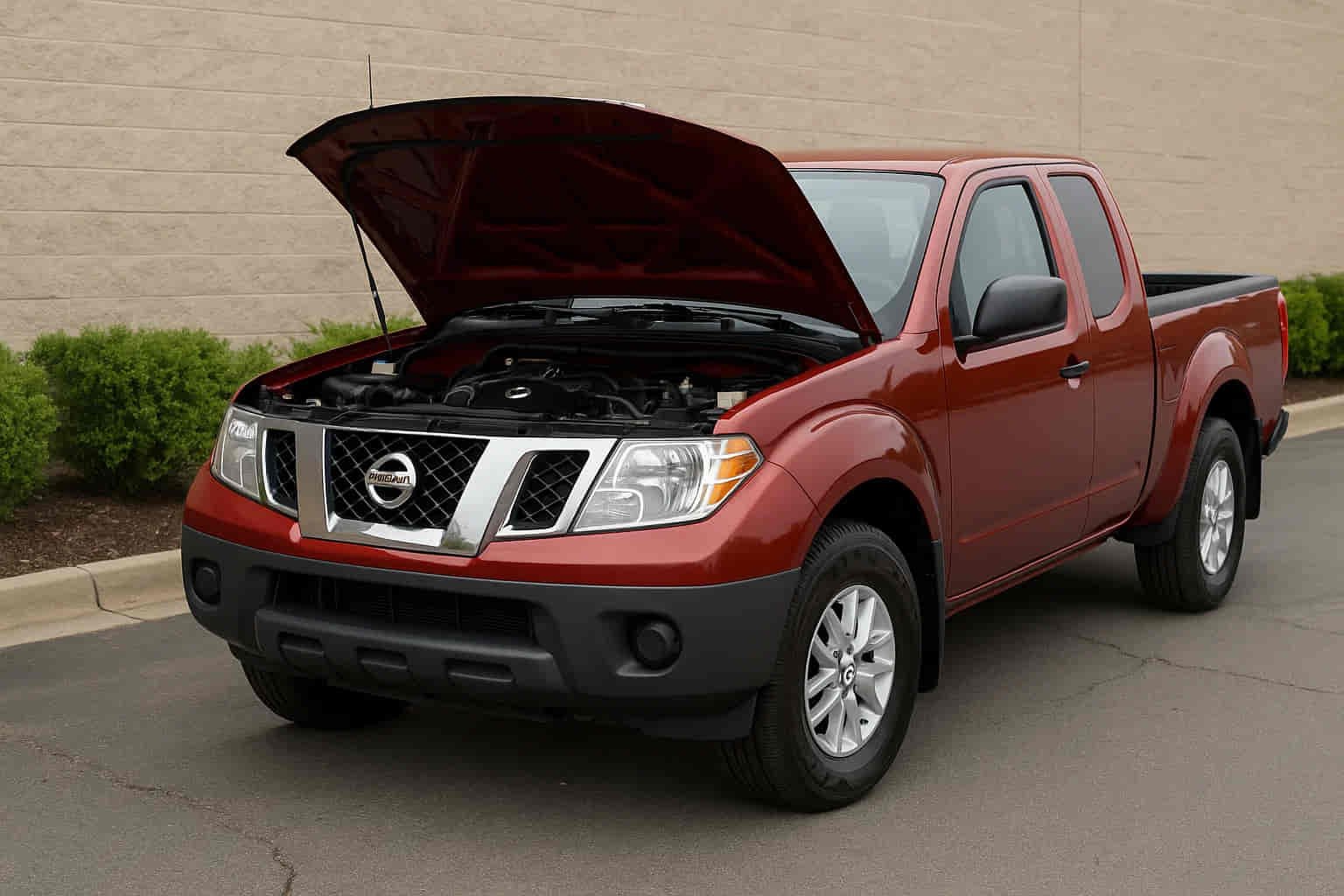When drivers talk about the durability of the Nissan Frontier, the conversation often shifts to one critical concern: transmission reliability. Over the years, countless owners have reported frustrating transmission problems that range from slipping gears to complete system failure. These issues are not only inconvenient but can also turn into expensive repairs if ignored. Understanding the common transmission problems in a Nissan Frontier is essential for both current owners and anyone considering buying a used model.
The challenge with transmission issues is that they rarely appear suddenly. Instead, they often start with small signs—delayed shifting, unusual noises, or leaking transmission fluid—that gradually lead to more serious damage. By recognizing these symptoms early, drivers can prevent costly repairs and keep their trucks running smoothly for longer.
This article takes a closer look at the most common Nissan Frontier transmission problems, explains practical fixes that actually work, and breaks down the real-world costs of repair or replacement. Whether you are already facing issues or simply want to avoid them, having the right knowledge will help you make smarter decisions about maintenance, repairs, and long-term ownership.
Common Nissan Frontier Transmission Problems
Nissan Frontier owners have long reported a recurring set of transmission problems that affect both the driving experience and long-term reliability of the truck. One of the earliest symptoms many drivers encounter is the feeling of the transmission slipping out of gear. Instead of a smooth acceleration, the truck may hesitate or jerk, creating safety concerns when merging onto highways or towing heavy loads. This behavior is usually tied to worn internal components or a drop in hydraulic pressure within the system.
Shifting difficulties are another frequent complaint. In certain model years, especially in the mid-2000s, the Frontier became known for hard or delayed shifts that made the truck feel less responsive. What starts as an occasional delay in gear changes can develop into a persistent problem linked to failing solenoids, overheating, or inadequate transmission fluid. Left unresolved, these rough shifts gradually accelerate wear on the entire transmission.
Fluid leaks further complicate the issue. It is not uncommon for owners to find reddish-brown spots beneath their vehicles, often caused by degraded seals or cracked cooler lines. Although a small leak may not seem urgent, the transmission relies heavily on fluid for both lubrication and cooling. Without enough fluid, the system overheats quickly, which in turn leads to burnt fluid and greater internal damage.
In severe cases, especially when early signs are ignored, overheating becomes a major contributor to failure. The Frontier, when subjected to heavy towing or high-temperature conditions, is particularly vulnerable to excessive heat buildup in the transmission. Overheated components lose their efficiency, and repeated exposure often leads to complete breakdowns.
Unfortunately, many Nissan Frontier owners eventually face the most serious outcome: total transmission failure. Once gears, clutch packs, and valves are extensively damaged, the only realistic solution is a full rebuild or replacement. This is not only one of the most expensive repairs a Frontier owner can encounter but also a point where some drivers question whether keeping the truck is financially worthwhile.
Fixes for Nissan Frontier Transmission Problems

Addressing transmission problems in the Nissan Frontier requires a careful balance between routine maintenance, timely intervention, and knowing when a full replacement is necessary. For many owners, the first step toward avoiding serious trouble is simply staying on top of fluid changes and filter replacements. Fresh transmission fluid not only improves shifting quality but also keeps the system cooler and cleaner, reducing the risk of early wear. Preventive maintenance may sound basic, yet it is the single most effective way to delay expensive repairs.
Some minor problems can be solved at home with patience and the right tools. Small leaks caused by loose connections or worn gaskets are often manageable without professional help, and keeping an eye on fluid levels can save the transmission from overheating. Many Frontier owners take a do-it-yourself approach to these small fixes, buying themselves extra time before larger issues develop. However, it is important to recognize that DIY solutions have limits.
When the truck begins to show signs of severe slipping, hard shifting, or recurring overheating, professional intervention becomes unavoidable. Certified mechanics can run detailed diagnostics to uncover hidden problems, such as failing solenoids or a damaged torque converter, that are beyond the scope of home repair. Ignoring these symptoms or delaying a trip to the repair shop typically results in greater damage and higher costs down the road.
In situations where the transmission is too far gone, the conversation shifts to rebuilding or replacing the unit altogether. A rebuilt transmission restores functionality and may come with a warranty, giving owners some reassurance. Others opt for a remanufactured or brand-new transmission, especially when they plan to keep their Frontier for many more years. While this is the most expensive option, it provides the most reliable long-term solution and prevents the cycle of repeated breakdowns that many owners dread.
Cost of Fixing Nissan Frontier Transmission Issues
The financial side of Nissan Frontier transmission problems is often the most stressful part for owners. Costs can vary widely depending on the severity of the issue, the age of the truck, and whether repairs are performed at a dealership or an independent shop. For smaller issues such as fluid changes or minor leak repairs, expenses are relatively manageable. A simple fluid change, especially if done at home, might cost less than a hundred dollars, while having it performed at a service center is still a modest investment compared to larger repairs.
As the problems become more complex, so do the costs. Fixing harsh or delayed shifting caused by faulty solenoids, replacing worn seals, or repairing cooling line failures can quickly add up to several hundred dollars. These mid-range repairs are often necessary to prevent more serious damage, but they still place a noticeable burden on a driver’s budget. For owners who depend heavily on their trucks for work or towing, the cost is often considered unavoidable.
The most significant expense comes when a complete rebuild or replacement becomes necessary. A rebuild typically ranges into the thousands, with prices depending on the availability of parts and the labor required to restore the transmission. Replacing the transmission entirely with a new or remanufactured unit often exceeds three or four thousand dollars, making it one of the most expensive repairs Frontier owners will ever face. At this stage, many drivers weigh the value of the repair against the overall condition and resale value of their truck, especially if it is an older model.
Choosing between a dealership and an independent mechanic also impacts the total bill. Dealerships generally charge more but provide OEM parts and warranties, while independent shops may offer lower rates and flexible options for rebuilding or sourcing remanufactured transmissions. Extended warranties and recalls, when applicable, can significantly reduce or even eliminate these costs, but not every Frontier owner is eligible for such coverage. For those without warranty protection, being proactive about smaller repairs often saves thousands in the long run.
Prevention Tips
Preventing Nissan Frontier transmission problems is often easier and far less costly than repairing them after they occur. The foundation of prevention lies in regular maintenance, particularly with fluid care. Transmission fluid is the lifeblood of the system, and when it becomes dirty, overheated, or runs low, the transmission begins to wear prematurely. Sticking to a consistent schedule of fluid changes ensures proper lubrication and cooling, reducing the chance of slipping gears or overheating during heavy use.
Driving habits also play a crucial role in long-term transmission health. Many Frontier owners rely on their trucks for towing or hauling, but consistently pushing the vehicle to its limits without additional cooling support invites trouble. Using proper towing practices, avoiding aggressive acceleration, and giving the transmission time to cool down after long trips in hot weather can all make a measurable difference. The way a truck is driven often determines how soon problems will arise, even in well-maintained vehicles.
Another smart preventive step is investing in high-quality transmission fluids and filters. While OEM recommendations should always be followed, some aftermarket fluids designed for high temperatures and heavy loads can add an extra layer of protection. Ensuring that the cooling system is in top condition is equally important, since a failing radiator or transmission cooler often leads to overheating and eventual failure.
For prospective buyers considering a used Nissan Frontier, prevention begins before the purchase. Requesting a detailed service history, inspecting for signs of leaks, and paying attention to the way the transmission shifts during a test drive can reveal early warning signs. Catching these problems before signing the paperwork can save thousands in future repairs. Ultimately, prevention is not about avoiding every possible problem but about reducing the likelihood of major failures and extending the life of the transmission as much as possible.
Conclusion
Transmission problems in the Nissan Frontier remain one of the most frustrating challenges for owners, not only because of the inconvenience they cause but also because of the significant repair costs they can create. From slipping gears and hard shifts to fluid leaks and complete failures, the issues often begin with small warning signs that grow more serious over time. The key takeaway is that early detection and consistent maintenance can make a dramatic difference in how long the transmission lasts and how much an owner ultimately spends.
For those already facing problems, knowing the range of available fixes—from simple maintenance to full replacement—provides clarity when making repair decisions. Understanding the real costs involved also helps owners weigh whether to invest in extensive repairs or consider other options, especially with older trucks. Meanwhile, preventive habits such as regular fluid changes, cautious driving under heavy loads, and using high-quality replacement parts remain the best strategy to avoid the cycle of recurring breakdowns.
In the end, the Nissan Frontier is a capable and dependable truck when properly maintained, but its transmission remains a weak spot that should never be overlooked. By staying informed and proactive, owners can minimize downtime, extend the life of their vehicles, and drive with greater confidence. Have you experienced Nissan Frontier transmission problems yourself? Share your story and let other drivers learn from your experience.

